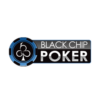
When starting your poker journey, it’s crucial to gather as much information as possible. Begin by understanding the rules of the game, then explore the basic principles governing different poker variants, and finally dive into advanced strategies that can help you achieve long-term profits.
In this guide, we’ll provide key strategies to enhance your gameplay as you embark on your poker adventure.
1. Play Ranges, Not Just Hands
Always remember that each action you take at the poker table reveals information to your opponents. Whether you’re opening, limping, or folding, your choices convey messages about your hand strength.
For example, when you open from an early position (like Under The Gun or UTG+1), you’re representing a strong, medium-ranking hand. Playing marginal hands from early positions can lead to significant chip losses over time.
If you face a call from one of the blinds, don’t give up too quickly, even if the flop isn’t what you hoped for. According to PokerStars Blog, if the flop comes down A-K-7 after a predictable check from the blind, you should consider a continuation bet (c-bet), even if you missed the flop entirely. Remember, you’re still representing a strong hand; if your opponent doesn’t hold an Ace or a King, they may fold, allowing you to take down the pot.
2. Bet the Turn After a C-Bet
While there are exceptions, it’s often profitable to semi-bluff on the turn. This strategy combines the potential for making a strong hand with the ability to force your opponent to fold weaker hands.
In most cases, betting on flush draws, open-ended straight draws, and even gutshot straight draws on the turn is a solid move. Experiment with this approach in your sessions—you’ll be surprised at how often opponents fold, even when you haven’t completed your draw.
3. Bluff-Catching: Assess Your Opponent
Before making a bold move, such as calling with a weak hand against an aggressive opponent, it’s essential to analyze how they’ve reached the river. Consider the strength of their bets and whether they could be bluffing. If they haven’t connected with the board, you may have an edge when it comes time for the showdown.
4. Avoid Slow Playing—Especially Out of Position
Slow playing can lead to disaster, particularly when you’re out of position. Your goal should be to maximize the pot when you hit a strong hand, like a set. Instead of trying to keep your opponent in the hand, focus on extracting as much value as possible.
5. The Power of the Double Barrel
When you choose to double barrel on the turn—placing a second bet after c-betting on the flop—opt for a size close to the pot. You’ll typically hold two types of hands: high-value hands and bluffs, both of which thrive on creating larger pots.
Remember, your opponent’s range may include many medium-strength hands that prefer a smooth run to the showdown. Don’t give them that opportunity!
Conclusion
By applying these foundational strategies, you’ll improve your poker skills and set yourself up for success at the tables. Keep practicing, stay aware of your opponents, and enjoy the journey of mastering this exciting game!









